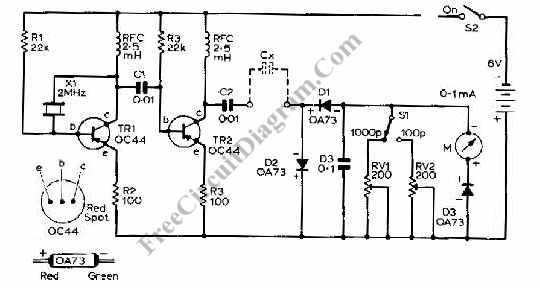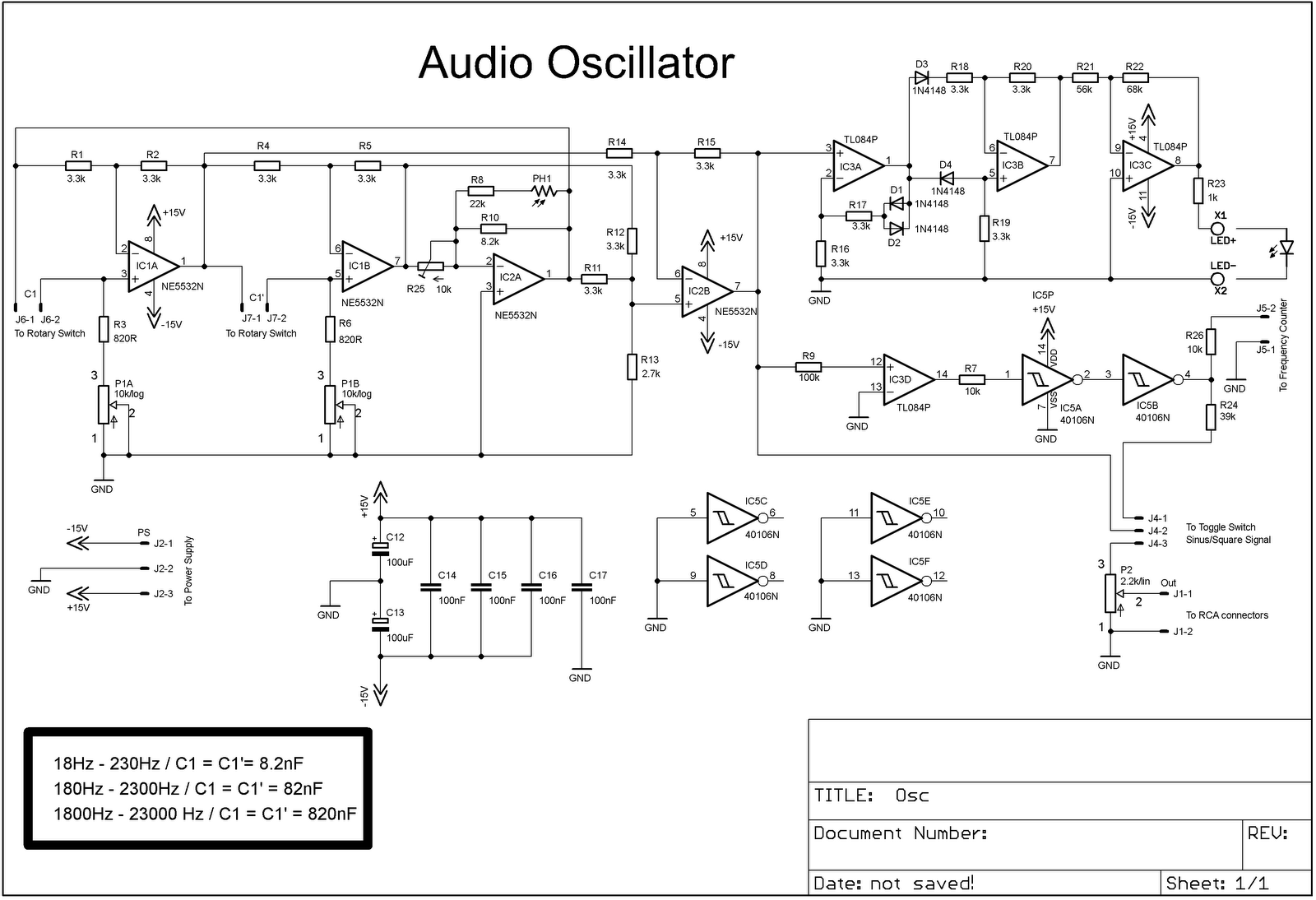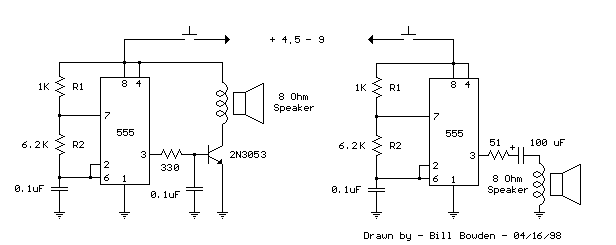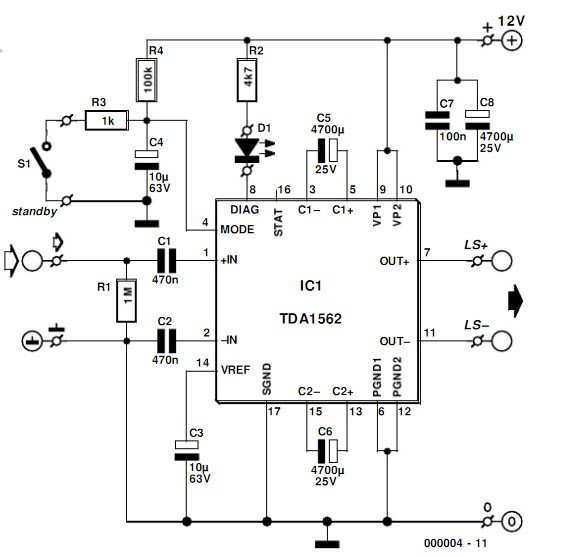
Produce Oscillator Applications Using the version of the 555 IC

This article offers valuable information for creating a specific oscillator or pulse generator using integrated circuits (ICs), resistors, and capacitors, regardless of the version of the 555 IC utilized.
The 555 timer IC is a versatile component widely used in various electronic circuits for generating precise timing and oscillation signals. It can be configured in different modes, including astable, monostable, and bistable, to achieve specific functionalities.
In an astable configuration, the 555 timer operates as an oscillator, producing a continuous square wave output. The frequency and duty cycle of the oscillation can be adjusted by selecting appropriate resistor and capacitor values. The formula for calculating the frequency (f) is given by:
\[ f = \frac{1.44}{(R_1 + 2R_2)C} \]
Where \( R_1 \) and \( R_2 \) are the resistors connected to the discharge and threshold pins, and \( C \) is the timing capacitor. The duty cycle can be modified by changing the ratio of \( R_1 \) to \( R_2 \).
For a monostable configuration, the 555 timer functions as a pulse generator. It produces a single output pulse in response to a trigger input. The duration of the pulse is determined by the resistor and capacitor values connected to the timing circuit. The pulse width can be calculated using the equation:
\[ T = 1.1 \times R \times C \]
Where \( T \) is the pulse duration, \( R \) is the resistor value, and \( C \) is the capacitance.
When designing circuits with the 555 timer, it is essential to consider the power supply voltage and the maximum output current to ensure reliable operation. Typical configurations can be implemented on a breadboard for prototyping, allowing for easy adjustments and testing of different component values to achieve the desired output characteristics.
In summary, the 555 timer IC serves as a fundamental building block for creating oscillators and pulse generators in various applications, from simple timing circuits to more complex signal generation tasks in electronic designs.Below we will provide you with useful article information to produce your own specific oscillator or pulse generator from integrated circuits (ICs), resistors, and capacitors using no matter the version of the 555 IC 🔗 External reference
The 555 timer IC is a versatile component widely used in various electronic circuits for generating precise timing and oscillation signals. It can be configured in different modes, including astable, monostable, and bistable, to achieve specific functionalities.
In an astable configuration, the 555 timer operates as an oscillator, producing a continuous square wave output. The frequency and duty cycle of the oscillation can be adjusted by selecting appropriate resistor and capacitor values. The formula for calculating the frequency (f) is given by:
\[ f = \frac{1.44}{(R_1 + 2R_2)C} \]
Where \( R_1 \) and \( R_2 \) are the resistors connected to the discharge and threshold pins, and \( C \) is the timing capacitor. The duty cycle can be modified by changing the ratio of \( R_1 \) to \( R_2 \).
For a monostable configuration, the 555 timer functions as a pulse generator. It produces a single output pulse in response to a trigger input. The duration of the pulse is determined by the resistor and capacitor values connected to the timing circuit. The pulse width can be calculated using the equation:
\[ T = 1.1 \times R \times C \]
Where \( T \) is the pulse duration, \( R \) is the resistor value, and \( C \) is the capacitance.
When designing circuits with the 555 timer, it is essential to consider the power supply voltage and the maximum output current to ensure reliable operation. Typical configurations can be implemented on a breadboard for prototyping, allowing for easy adjustments and testing of different component values to achieve the desired output characteristics.
In summary, the 555 timer IC serves as a fundamental building block for creating oscillators and pulse generators in various applications, from simple timing circuits to more complex signal generation tasks in electronic designs.Below we will provide you with useful article information to produce your own specific oscillator or pulse generator from integrated circuits (ICs), resistors, and capacitors using no matter the version of the 555 IC 🔗 External reference





